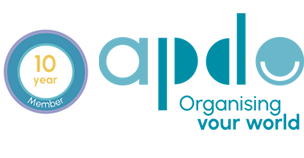HOARDING AWARENESS BLOG POST – author Julieanne Steel
Hoarding awareness week is an important week in our mental health calendar, which runs from 13-17th May 2024, this highlights and raises important facts, information, support, new research and signposting for people with hoarding behaviours.
My name is Julieanne Steel, I am a professional hoarding practitioner and psychotherapist. I work with the complex mental health condition Hoarding Disorder (HD). To learn more about me, please find details at the foot of this blog.
“You are more valuable than your things”.
Hoarding is estimated to affect up to 3 million people in the UK. The NHS acknowledges that hoarding can be a symptom of an underlying mental health condition.
The average age of people who have hoarding behaviours is between 50-60. Hoarding behaviours are more likely to occur with people who live alone, have grown up in a hoarded home, suffered adverse childhood experiences, are neurodivergent and/or have been the victim of trauma.
Hoarding stems from several core vulnerabilities that include early experiences, genetic predispositions, information processing difficulties, depressed and anxious moods, and various personality traits. This results in mistaken beliefs about attachment to possessions, and negative emotions that lead to avoidance behaviours. (Muroff, Bratiotis, & Steketee, 2011)
In my work with clients, I recognise that no-one’s status is immune to hoarding. I notice an array of hoarding characteristics, which can present in the following ways;
Fear and anxiety – finding comfort in your things
Indecisiveness, the effects of decision fatigue
Unrelenting standards – expectations of things being perfect
Socially isolated, typically alienating others, due to feelings of shame
Poor insight – lack of understanding how this affects themselves and other
Excessive attachment – emotional cognitive distortions
Large number of pets – the rescuer of strays
Churning – moving items from one place to another
Self-care – often neglecting hygiene, maybe using public facilities to wash/shower
Acquiring and Saving behaviour – Spending vs Frugality
HOARDING IS A HIDDEN HARM
It is our duty of care to offer compassion to reduce feelings of shame. Shame is corrosive to change. Shame will grow in the dark and hide hoarding behaviours, causing catastrophic consequences.
Hoarding behaviours and chronic dis-organisation are NOT lifestyle choices – they are the result of a complex matrix of conditions, in particular Executive Functioning skills, and in some cases the presence of abnormalities of the anterior cingulate cortex (ACC) of the brain.
The ACC and pre frontal cortex act as the CEO in the decision-making process. It sits like a collar at the front of the brain. Often other comorbidities exist, for example OCD, anxiety, and depression.
For people with hoarding behaviours, they often associate positive emotions (during acquisition, reviewing and saving items) and the opposite emotion of grief is felt when attempting to discard.
The treatment for hoarding behaviours is a specialist approach, combining therapeutic intervention and counselling, coupled with grass roots practical support, working with an integrative model of theories such as, Cognitive Behaviour Therapy (CBT) and Solution focused Brief Therapy, Mindfulness, and in a person-centred and compassionate way.
Understanding some aspects of hoarding behaviours is rooted in “attachment” theory.
At some point in early childhood, most people had transitional objects; these are objects that belong to the child. Examples of these may be a blanket, stuffed animal, doll, action figure, pillow. As adults we may recognise these as photographs, clothing, memorabilia, books, mobile phones.
The relationship to the transitional object may change from love to hate, and the object must be able to withstand rough treatment. The transitional object has a substance and a life of its own, and it cannot be copied or replaced.
It carries symbolic power only through the meaning, with which, the child and later the adult infuses it. Transitional objects provide a sense of security and comfort.
We can, therefore, relate and better understand how objects can fill the home, as a substitute for absent relationships. People with hoarding tendencies rely on ‘object relating’ for connection.
“THE COCOON OF CLUTTER; from the very beginning of time, we crave connection”.
Recent research has identified that a high percentage of people with an autistic diagnosis, also live with hoarding behaviours. Autism shows a deeply sensory form of patterning, involving repetition and ritual.
Many autistic people may engage in hoarding behaviours relating to their special interests. Need for comfort and security can be likened to autistic people’s need for familiarity. One study found that autistic adults who hoard, might similarly collect objects over time, as a way to remember the past.
Subkowski (2006:237) focused on the phenomenon of ‘collecting’, arguing that it expresses a yearning for ‘completeness and for a world that will become perfectly shaped by way of the collection’:
By fusing with the ideal object of collection, an attempt can be made to suspend the separation from the early self-object.
Hoarding behaviours try to avoid suffering, through accumulating objects, to put off grieving/loss, and the mourning process.
Unbearable experiences of separateness, appears to reside at the core of hoarding behaviours. Some extreme hoarding observed would denote the existence of an ‘autistic retreat’ or ‘cyst’ protecting the individual from unbearable fears of pain, and disintegration (as described by key writers such as Sydney Klein and Mitrani).
Separation and need for Fusion (image Leonardi da Vinci)
Various artists have been critical thinkers, for example Agnes Martin, where she had discussed the compulsive inability to discard possessions, and to what extent can the hoarder’s melding of overvaluation and indifference cast light on artistic practices that strive to save things from the esteem and disesteem characteristic of standard hierarchies of value? (Agnes Bernice Martin RCA was an American abstract painter known for her minimalist style and abstract expressionism. Born in Canada, she moved to the United States in 1931.
I had the pleasure of delivering a workshop to a group of 3rd year trainee counsellors, during which, one of the students was inspired to write a piece of poetry, which concludes this blog below.
Credit to Simon Drake, where this poem appears in his book Triggers.
No one understands my plight, I love everything I own
Wall to ceiling I fill the space, To feel safe within my home
Newspapers, clothes and food shopping, possessions mean the world to me
I am judged by those with no understanding, A hoarder is all they will ever see
You don’t know my history, Of what I have lived through
I share my home with shame and guilt, You have no idea, do you?!
I have relationships with all of my belongings, Each item comforts and supports
Yet I see fingers pointing and judging eyes, You don’t know the battles I have fought
You think I’m dirty and disgusting, Rubbish and junk that’s all you see
I would be exposed and vulnerable, If you took my possessions away from me
Please show a little kindness, I haven’t been outside in years
I’ve built this fortress for my protection, To allay me from all my fears
So many things I have sacrificed, To calm the voices in my head
From friendships, love and family, To bathing and sleeping in my bed
They want to repossess my home, Labelled a hoarder I have no voice
I am being forced to bin all of my possessions, How am I expected to make that choice
Please don’t come in all guns blazing, Tread softly making your way to me
I am already loaded with embarrassment and shame, I need unconditional love and empathy
Please show me a little compassion, Hoarding feels like it’s now a crime
I need your support and patience, For me to heal will take some time
I’m a professional hoarding practitioner (PHP).
I have been a member of the Association of professional declutterers and organisers (APDO) for over 10 years.
I’m a qualified integrative counsellor and CBT therapist. I work as a counsellor, in private practice, along with the Autism Hub and The Palmeira Practice. I am experienced in working with the elderly, specifically for AGEUK and people who have hoarding behaviours.
I live in West London, a single Mum to 3 grown up daughters and my 6 year old granddaughter, who is non-verbal autistic.
I am registered with the BACP (MBACP) and accredited with NCPS. I belong to the Counselling Directory and BACP Therapist Directory.
I can be reached on 07715252215 and www.yourselfology.co.uk







No comments yet.